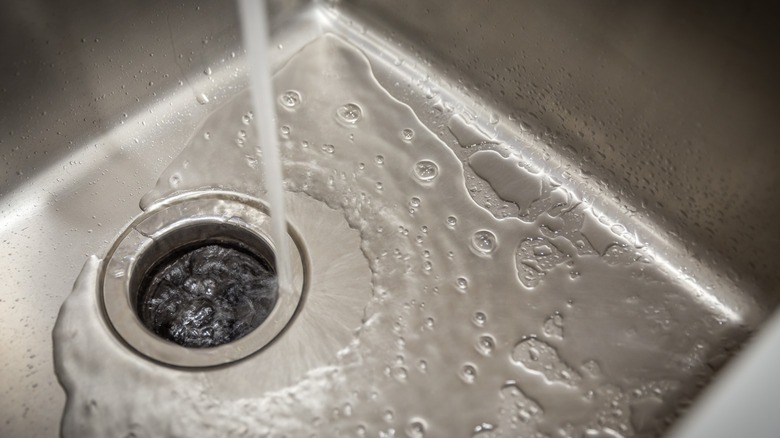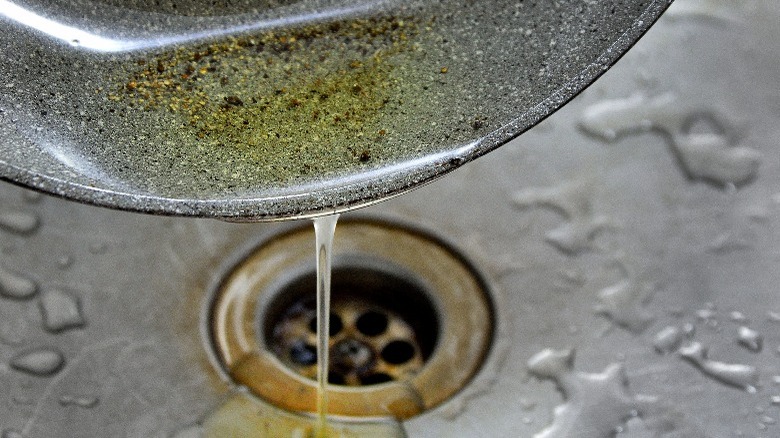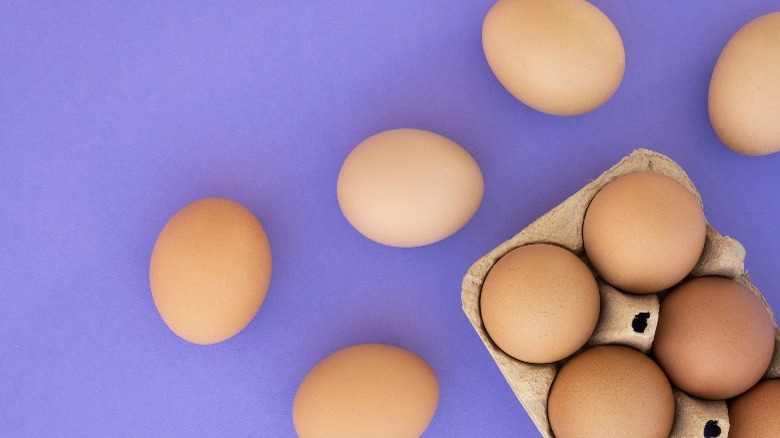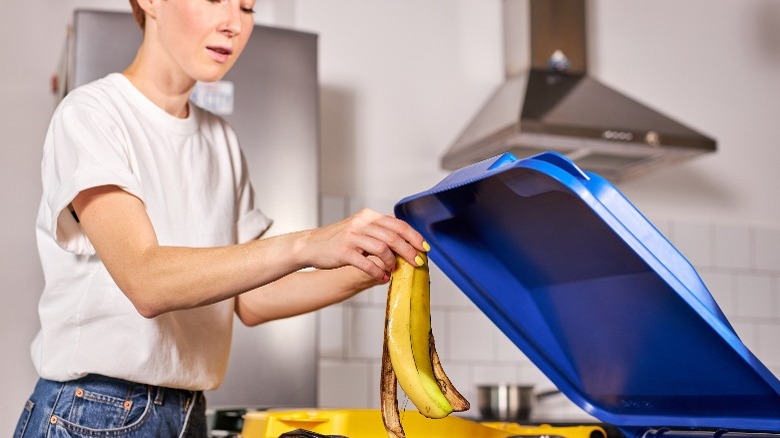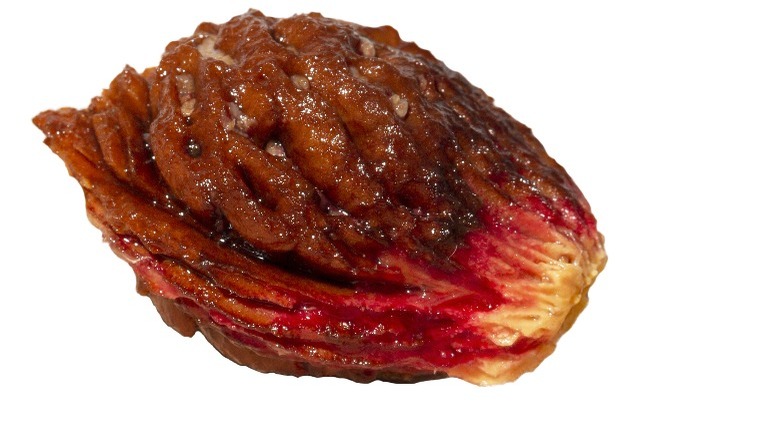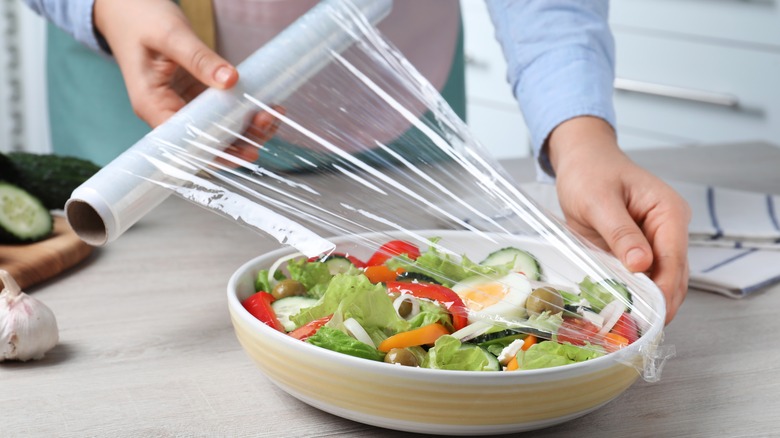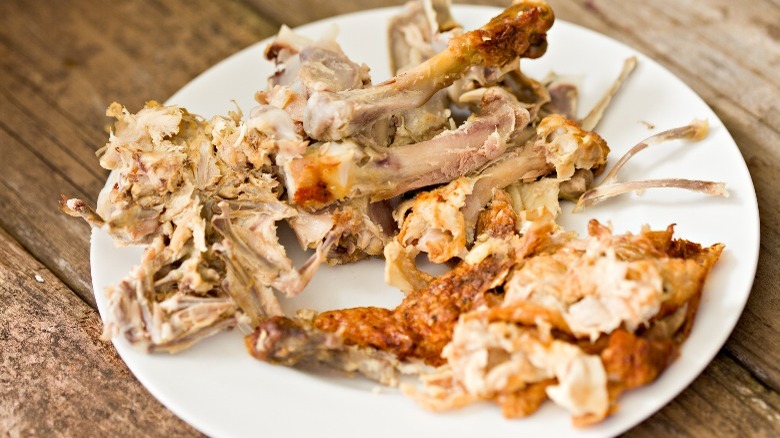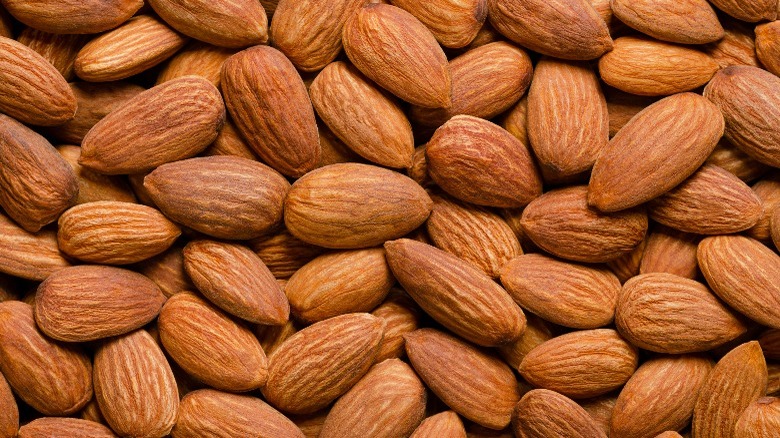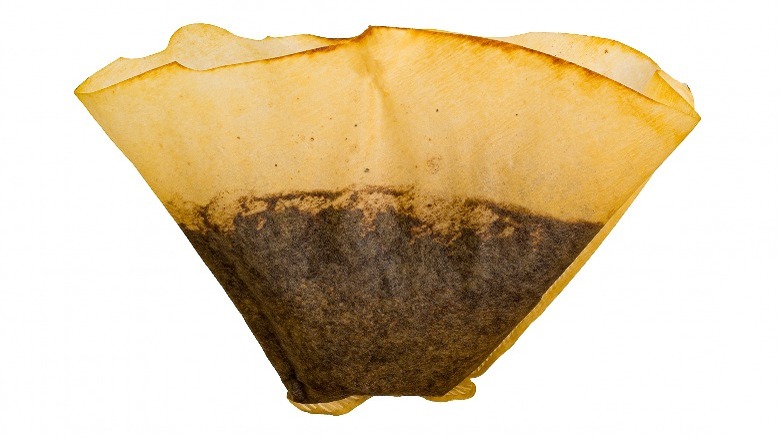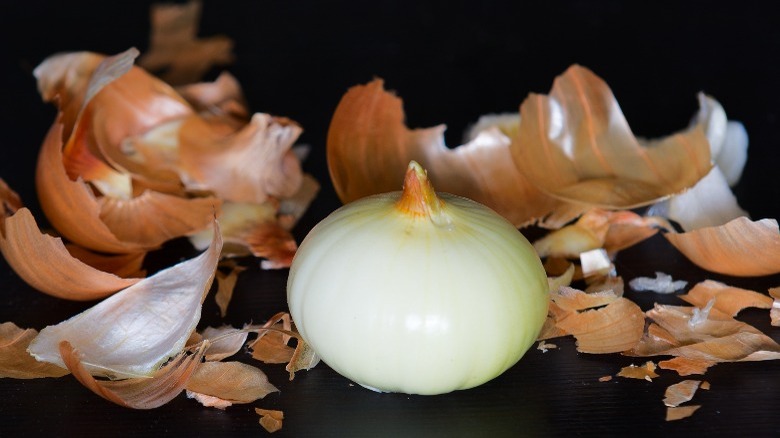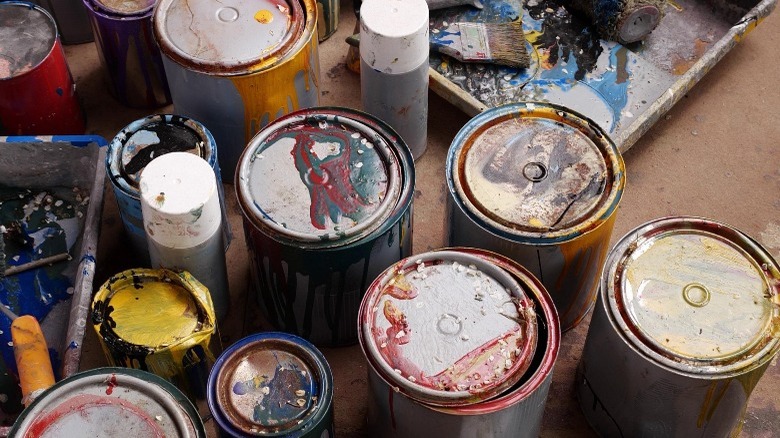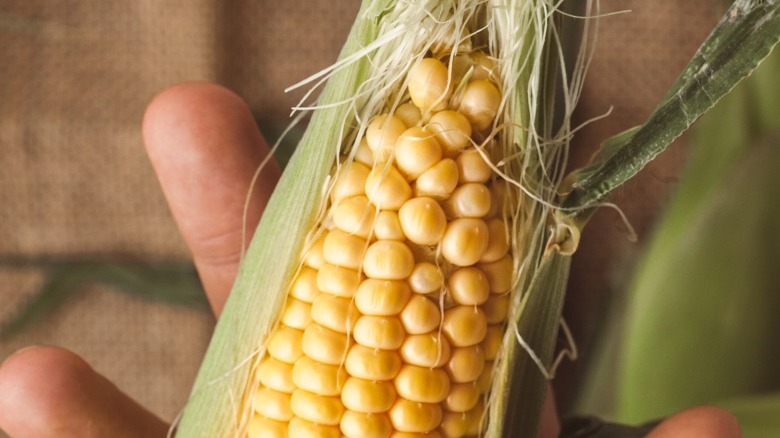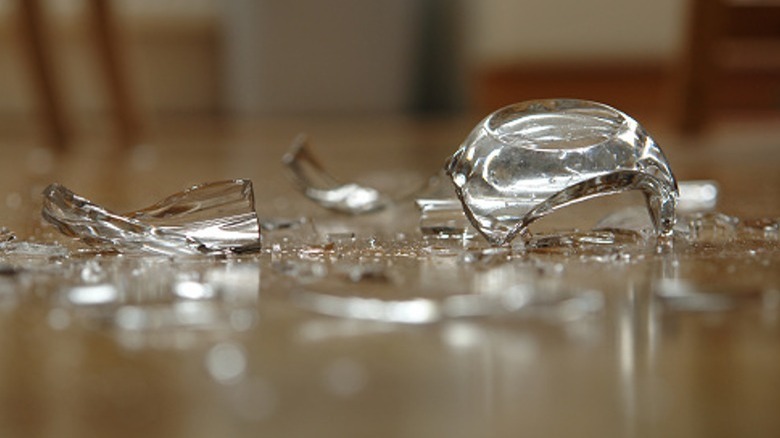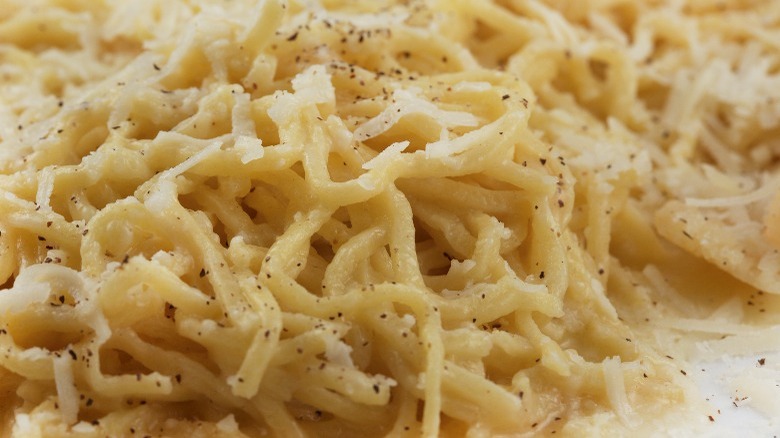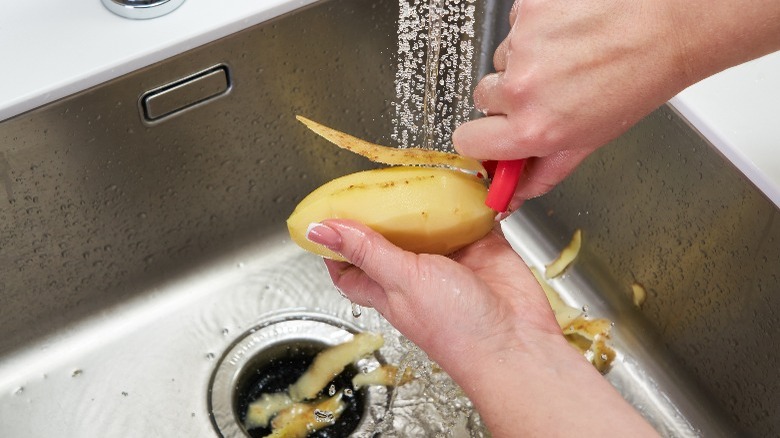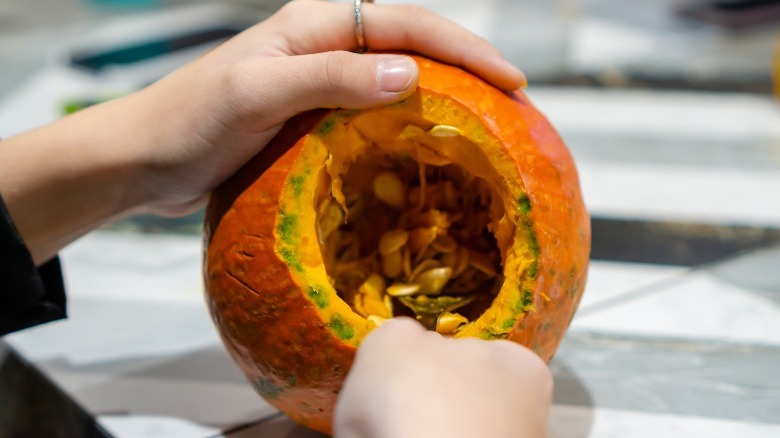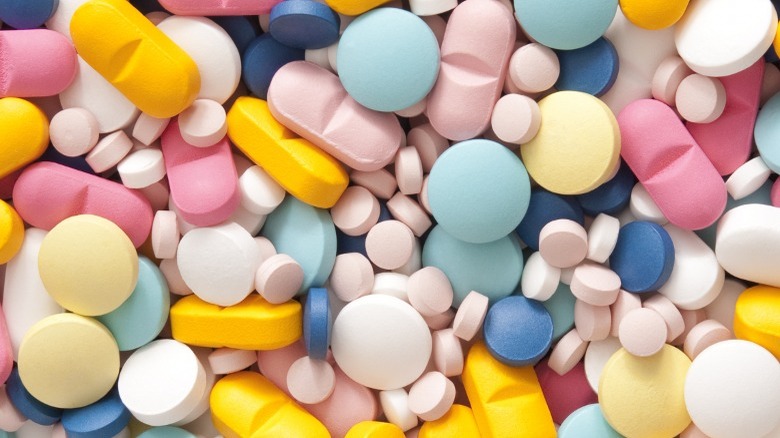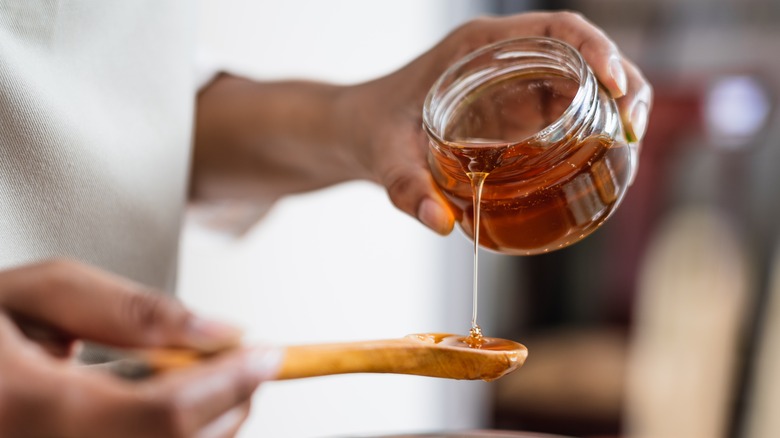17 Items You Should Never Dispose Of In Your Garbage Disposal
Garbage disposals make life easier — until they stop working. More often than not, these appliances develop problems because you clog them with things they can't handle. They might seem like all-powerful grinding devices, but they can't be used like trash cans or recycling bins. Throw in the wrong thing, and you'll get a problematic humming sound or a frighteningly loud clank.
The mechanics of these appliances are fairly simple. They use small electric motors that power blades on top of grinding chambers. Here is where things get chopped up and liquified. Water from the faucet then pushes it down the drain. Disposing of the wrong things in one can damage these parts and cause clogs in the plumbing pipes. Repairing a garbage disposal is not fun, especially when it has to be accessed from beneath the sink. And if it's clogged up with sludge, it will be messy and smelly work. In order to avoid that, commit the following food and non-food items to memory, because prevention will keep the appliance in good working shape and save a lot of headaches.
1. Cooking oils, fats, and meat
Dealing with oil and grease is part of cooking in a kitchen, and some methods use and generate more than others. Deep-frying is the worst offender, even though it makes food taste so delicious. But anyone who's in the habit of pouring used cooking oil down the drain is headed for trouble, whether there's an installed garbage disposal or not. Oils congeal over time and can form coatings on pipes and cause clogs.
This policy also applies to thick fat and leftover meat. Peanut butter, regular butter, and margarine are also in this category due to their high-fat contents. However, if some oil goes down the drain when dishes are being washed, it's not an emergency. Flush out the disposal with cold water for a minute or so. It will help solidify the fat and make it easier to chop up in the disposal.
2. Eggshells
Those fragile-looking white or brown eggshells might appear fine for the garbage disposal, but tossing them consistently down the drain can cause real damage. There is even a myth that they work to sharpen the blades, but this isn't true. And it's not just the outer shells that are the problem. When those are finely ground down in disposals, they make microscopic waste that can easily adhere to any gunk living in the pipes. This helps create future blockages.
But then there are the transparent inner membranes that appear as thin coatings on the insides of the shells. That filmy, sticky matter can get caught on the blades or in the impeller, leading to an impenetrable mess that blocks other particles from going through. This is a twofold problem that doesn't have to happen. Toss those bad boys into the trash or compost, and make it a household habit.
3. Banana peels
Even though whole banana peels seem too big to stuff down garbage disposals, people still do it, to their later dismay. And when the grocery store stickers are left on, those can make matters even worse. Banana peels average about 2.95 to 3.65 millimeters thick, and they are tough, fibrous, and slippery. These qualities make it hard for the blades to break them down, even when they have high-powered motors. As a result, the pieces can end up clogging the pipes.
Banana peels may be biodegradable, but they can take up to two years to break down naturally. And unlike the soft fruit inside, those stubborn peels cannot liquify enough to go down drains smoothly. Grinding them up is a shame anyway, because they are packed with usable nutrients. They can be added to compost bins, made into fertilizer, and smoothed on the skin to relieve itchiness and rashes.
4. Fruit pits and seeds
Putting a fruit pit into a garbage disposal is like dropping a rock into the appliance; people generally realize this is a mistake. Both are too hard for the blades or impellers to process, so the pit might simply bounce around and damage or completely destroy the working parts. The blade edges can become blunted, bent, or damaged beyond repair, and the longer the pit spins around in there, the worse the outcome will be. And even though watermelon and other fruit and vegetable seeds are smaller and not as hard, they can also stop garbage disposals from working. These are difficult to grind up and can get stuck on drain line walls and make them back up.
You also want to avoid dropping leftover plums, avocados, cherries, mangos, and other pitted fruit leftovers into the sink because they can roll into the disposal later on. Either throw them into the garbage can or composting bin instead.
5. Paper and plastic
Those produce stickers are found across all sorts of fruits and vegetables and should not make their way into garbage disposals. Paper garbage does not break down in the water like toilet paper does, so it can stick to the blades and clog the pipes. This category also includes napkins, paper towels, and cleaning wipes. Don't put used coffee filters down there, either.
Plastic food wrappers also jam up garbage disposals. Ensure the plastic wrap from your leftovers and packaged meat doesn't accidentally fall into the drain. Other plastic items like bottle caps can also drop in and jam things up. To unclog a jammed disposal, turn it off by unplugging it from the outlet under your sink. Then, try to pull out the cap with a pair of tongs. If that doesn't work, get under the sink and insert a small Allen wrench into the hole in the bottom of the disposal. Work it quickly back and forth, freeing any debris caught in the blades.
6. Food bones and seafood shells
Food remains like bones and shells start to smell bad after a while, so tossing them into the garbage disposal would be nice. But bones are a big no-no for a few reasons. Large ones can get stuck and dull blades, just like fruit pits. And if they're unusually dense, bones can break the blades into pieces. However, a small, thin fishbone shouldn't be big enough to do either, so it's okay if a few of them slide off your plate and into the disposal while washing dishes.
Seafood shells are also out of the question, including those on oysters, mussels, and shrimp. It can be hard to resist the urge to toss those into a disposal, especially when cleaning a pound or more, but that is a big mistake. Even if the motor has a lot of horsepower, it probably won't be able to grind the shells down finely enough to drain without causing problems. And even if it did, the smell would stay there for days. Tossing the shells into the trash as the shrimp are peeled is wiser. If they start to stink, throw them out in your outside bins.
7. Nutmeats and popcorn kernels
It's been established that seafood shells can't go in disposals, but nuts also have shells that are too hard to be ground up by the blades or impellers. What about nutmeats, though? These are the edible parts inside. They are certainly softer than the outsides but, even so, are not candidates for garbage disposals. The worst case scenario is that the blades chip and break, and the best case scenario is that they get dulled.
The other consequence of putting nutmeats in a garbage disposal is a thick, gloppy mess. The grinding motion will create a thick, buttery consistency that can accumulate on the insides of the disposal and plumbing pipes. On the other hand, unpopped popcorn kernels won't turn into butter when ground up because they contain little fat. But they could still cause damage to the disposal's working parts. So enjoy your popcorn and peanuts, but don't put the leftovers where they don't belong.
8. Coffee grounds and tea leaves
When coffee grounds are dry, they are lightweight and seemingly harmless. But when they get wet, they become dense and clumpy. And when other food waste is added to this mess, it can become a garbage disposal's worst enemy. It can just sit there on the bottom and refuse to move — if it does, the globs can get stuck in the pipes. Instead, it's better to compost or throw out your grounds. Tea drinkers shouldn't put tea bags or loose leaves in there, either. Like coffee grounds, they produce thick sediment that builds up and causes clogs.
You might have heard the myth that coffee grounds can remove smells from garbage disposals, but don't believe it. This will just damage your appliance. Instead, pour baking soda and vinegar down the drain to banish any odors. The chemical reaction will kill bacteria lurking in the pipes, helping your sink smell fresh again.
9. Certain parts of an onion
Preparing onions by the kitchen sink is common, but tossing the thin outer skins or membranes down the disposal is a recipe for disaster. The skins can slip right on by the blades or impellers and clog up drain pipes. They can also get wrapped around the parts. But even if those parts make their way through the grinding process and into the pipes, they can create barriers that trap other waste from passing through.
Raw onion pieces are fine to put in garbage disposals, though. Those are the right consistency that can be ground up. But cooked ones might be too soft and might be greasy. This is a lot to remember for just one vegetable, but there's no need to stress; dispose of all the parts elsewhere to stay on the safe side. For example, you can compost them without any issues.
10. Paint
It's not unheard of for people to pour paint down garbage disposals, because it might seem like the most convenient option at the time. But this can lead to a host of unwelcome problems, whether it's water, oil-, or latex-based. The second two are thicker and can coat the inside of the disposal and the pipes. And once they solidify, expect significant blockages that prevent other things from passing through.
Unused paint shouldn't be tossed into the trash either, even when it's still inside a can. Paint contains chemicals that can be harmful to the earth when not disposed of correctly, and communities have specific ordinances for paint disposal. So, what's acceptable in one town might be prohibited in another. The best information resource is usually the city or county's government website. In some cases, throwing out dried latex paint in regular garbage cans is permissible, but always check first.
11. Corn cobs and husks
Many grocery stores have corn husking stations located next to the ears for sale, so it's not necessary to do this elsewhere. The collection bins hold the husks and corn silk, and customers take home the cleaned pieces. But when this work is done at home, resist the urge to put all that stuff in the garbage disposal. All of that stringy, fibrous waste will likely get tangled up in the blades and cause the motor to jam. The silk and husks can also bind up other food matter and prevent that from getting ground up.
It's smarter to husk corn outside over a trash can because the stray waste will stay out of the disposal and the entire kitchen. And don't think the cobs can go into the disposal, either. Not only are they too large, but even the sharpest blades and strongest motors aren't strong enough to grind them down finely enough.
12. Broken glass
Anyone who ever thought, "It's just a little bit of broken glass; it won't hurt the garbage disposal," was headed for trouble for obvious reasons. But whether it is done intentionally or unknowingly, this is probably the most dangerous thing that could go down there. At the very least, it could burn out the motor or cause other damage, but pieces of glass could also be expelled and cause injuries.
If glass or something else sharp like metal gets inside, disconnect the disposal and put on protective gloves. Use a pair of needle nose pliers and/or a vacuum hose attachment to safely remove the pieces, but know that it might be impossible to remove the tiniest shards. If these methods don't solve the problem, a professional repair may be necessary. This averages around $200 to $300. In some cases, the damaged disposal will need to be removed and a new one purchased and installed.
13. Starchy foods
This is a big category that includes food favorites like pasta, oatmeal, bread, and matzoh. Here's the problem: All of these contain starch, which retains water and expands when wet. So even when uncooked, their textures will change when they're in the disposal and water goes in. And the longer the mess stays there, the gummier and harder it becomes. It keeps absorbing water, and when people try running the faucet to fix the clog, it only makes things worse. The sink just fills up with cloudy, icky water.
Two other kinds of starchy foods that don't go with disposals are potatoes and rice. This includes instant flakes and French fries. Like other starchy foods, these will become pasty and harden over time, messing with how the garbage disposal functions. Pasta has a redeeming quality, though — it contains high levels of nitrogen, which is great for composting. Throw it into your compost bin instead.
14. Potato peels
People with garbage disposals might habitually peel all kinds of potatoes over the sink and let the machine grind up the waste. Anyone who has done this has probably noticed that the peeled-off pieces get stuck before going down. Then, more water pressure is used to push them through. But making a habit of this could turn into a homeowner's nightmare and a plumber's paycheck. The different-colored peels are thin, and while not as fibrous as other vegetables, they can still get lodged onto the different parts of the disposal.
These things happen because they have starch remnants that act like glue. Potato peels stick to the garbage disposal opening, the rubber gasket, and the inner working parts. They're slippery, too, so they can sneak through the disposal and find homes in the pipes. And over time, the starch accumulation from the peels can build up into a thick paste that makes the blades stop turning.
15. Other stringy or fibrous vegetables
While corn was already mentioned, another fibrous offender is celery, which is packed with coarse strings that can wrap around the appliance's inner components and make the blades stop turning. Asparagus is also stringy, so keep that out of the disposal, too. Other vegetables that are hazardous to a disposal's health include artichokes, kale, and chard. Spinach should be especially avoided because, in addition to being fiber-rich, the somewhat rubbery consistency makes it harder to grind.
Carrots are fine, but put the peels can behave just like the ones on potatoes. While the blades can grind the shavings, the issue lies with the plumbing. The disposal turns them into a pasty substance that can clog the pipes. And when Halloween rolls around, don't put the dug-out pumpkin guts in the disposal, either — that's full of fiber and seeds. Save stringy and fibrous vegetables for the compost bin or put them in the trash.
16. Medicine
While some medication tablets can technically be ground up by garbage disposals, and liquid medicines can go straight through, these should never be disposed of this way. Everything that goes down there makes its way into local water supplies, so even if it's in powder form, it could still cause pollution or expose humans and wildlife to toxins. This doesn't mean prescription and non-prescription medications should be poured or dropped in toilets, either. While some can, you should read the label instructions or patient information first.
To dispose of the medication safely, remove it from its original containers and combine it with things like cat litter, dirt, or anything that makes them impossible to consume. Once that is done, it can be sealed in plastic bags and thrown out in the trash. There are other options, too. The U.S. Drug Enforcement Administration (DEA) sponsors a National Prescription Drug Take Back Day and provides information about local pharmaceutical disposal locations.
17. Honey
Honey is a common kitchen ingredient that you might not expect to cause any trouble in your garbage disposal. But don't let its store-bought liquid texture fool you -– honey is an undeniable clog culprit for a number of reasons. As a viscous liquid, it is sticky enough to be a cause for concern. It may coat the drain and disposal, effectively acting as an adhesive for other pieces of food waste that follow. The buildup that ensues can cause clogs that damage the garbage disposal mechanisms.
It's also best to avoid sending honey down the drain because of its natural propensity to crystallize. You've probably seen this happen to your own jar of honey over time. In your pantry, this solidified honey is harmless to consume; it can easily be made liquid again with a bath in hot water. However, if liquid honey crystallizes within the garbage disposal, it's not so innocuous -– it can cause clogs and prevent the disposal blades and grinders from working appropriately.
To dispose of honey properly, stick to scooping excess directly into the trash or compost. But if you would still prefer to pour it down the drain, you can do so by first dissolving it entirely in hot water. Because honey is water soluble, dissolving it breaks down the chemical bonds that cause it to be sticky and crystalline. And yes, that means there's no need to worry about pouring the remaining honey-sweetened tea in your mug down the disposal.
